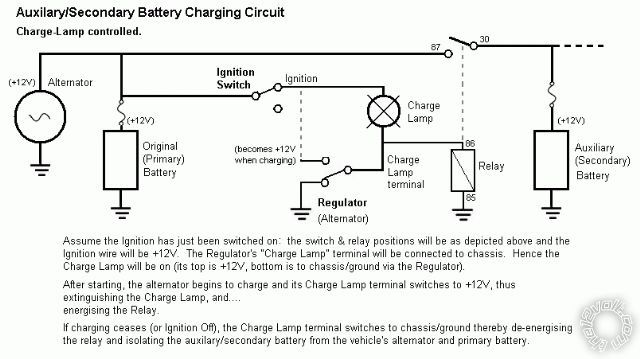Posted: December 13, 2009 at 4:45 PM / IP Logged
Posted: December 14, 2009 at 3:41 PM / IP Logged
Posted: December 14, 2009 at 6:07 PM / IP Logged
Posted: December 14, 2009 at 7:12 PM / IP Logged
Posted: December 14, 2009 at 7:52 PM / IP Logged
Posted: December 14, 2009 at 8:31 PM / IP Logged
Posted: December 15, 2009 at 12:35 AM / IP Logged
Posted: December 15, 2009 at 8:48 PM / IP Logged
Posted: December 15, 2009 at 8:51 PM / IP Logged
Posted: December 15, 2009 at 9:42 PM / IP Logged
 Printable version
Printable version


| You cannot post new topics in this forum You cannot reply to topics in this forum You cannot delete your posts in this forum You cannot edit your posts in this forum You cannot create polls in this forum You cannot vote in polls in this forum |

| Search the12volt.com |
Follow the12volt.com 
Tuesday, April 23, 2024 • Copyright © 1999-2024 the12volt.com, All Rights Reserved • Privacy Policy & Use of Cookies


Tuesday, April 23, 2024 • Copyright © 1999-2024 the12volt.com, All Rights Reserved • Privacy Policy & Use of Cookies
Disclaimer:
*All information on this site ( the12volt.com ) is provided "as is" without any warranty of any kind, either expressed or implied, including but not limited to fitness for a particular use. Any user assumes the entire risk as to the accuracy and use of this information. Please
verify all wire colors and diagrams before applying any information.








 (the above (modified) diagram wit thanks to my poor victimised colleague.)
The advantage of that system is its simple and (probably) cheaper relay, total isolation of the batteries when not charging but without the diode voltage losses and other complications of the split diode system. (And why Schottky diodes? Just any power diode surely?)
A disadvantage is the need for a charge-lamp circuit that can drive a relay. But most alternators will.
Older vehicles with electric fuel pumps often use the charge lamp circuit (only) to control the fuel pump relay. In such vehicles, the fuel-pump relay could power the Aux battery's relay.
Otherwise an over-voltage sensor/switch that controls the relay is required.
Now for solar panels....
You want to know that solar panels DO NOT contain any energy storage (aka batteries)?
You want to know that it IS well & truly feasible to provide tracking to GAIN power (more than 3 degrees off-normal is usually 5% or more energy loss; soon rising to over 20% above 5 degrees etc)?
You want to know the difference between a panel's "rated" output and its most likely "real" output?
You want a regulator that's similar to my ~$20 kit (for 150W or 300W, maybe more)?
You want to know why it is (generally) a joke using solar power in a gasoline powered car?
Bring it on Baby. Bring it on!
(the above (modified) diagram wit thanks to my poor victimised colleague.)
The advantage of that system is its simple and (probably) cheaper relay, total isolation of the batteries when not charging but without the diode voltage losses and other complications of the split diode system. (And why Schottky diodes? Just any power diode surely?)
A disadvantage is the need for a charge-lamp circuit that can drive a relay. But most alternators will.
Older vehicles with electric fuel pumps often use the charge lamp circuit (only) to control the fuel pump relay. In such vehicles, the fuel-pump relay could power the Aux battery's relay.
Otherwise an over-voltage sensor/switch that controls the relay is required.
Now for solar panels....
You want to know that solar panels DO NOT contain any energy storage (aka batteries)?
You want to know that it IS well & truly feasible to provide tracking to GAIN power (more than 3 degrees off-normal is usually 5% or more energy loss; soon rising to over 20% above 5 degrees etc)?
You want to know the difference between a panel's "rated" output and its most likely "real" output?
You want a regulator that's similar to my ~$20 kit (for 150W or 300W, maybe more)?
You want to know why it is (generally) a joke using solar power in a gasoline powered car?
Bring it on Baby. Bring it on!